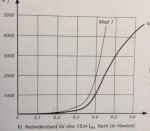oldmanofthehills
Well-Known Member
I re-engined both our last two boats. The Navigator was very pleased with reliability power and quietness and I spent less time in the bilges dismantling them while she steered, sometimes happy sometimes her fretting that we would not be able to push the tide up to our mooring or counteract the cross current at harbour. Recent Beta 25 was £5000 just for engine but a bit of a so and so to fit due to hull being moulded for something horrid - a Bukh 20. Previous 3YM30 was £5000 fitted 4 years ago. A Beta 30 would be a bit more
There is pleasure in getting something to good order, and happily I have few other expenses except to prop up grown children and buy beer.
There is pleasure in getting something to good order, and happily I have few other expenses except to prop up grown children and buy beer.


